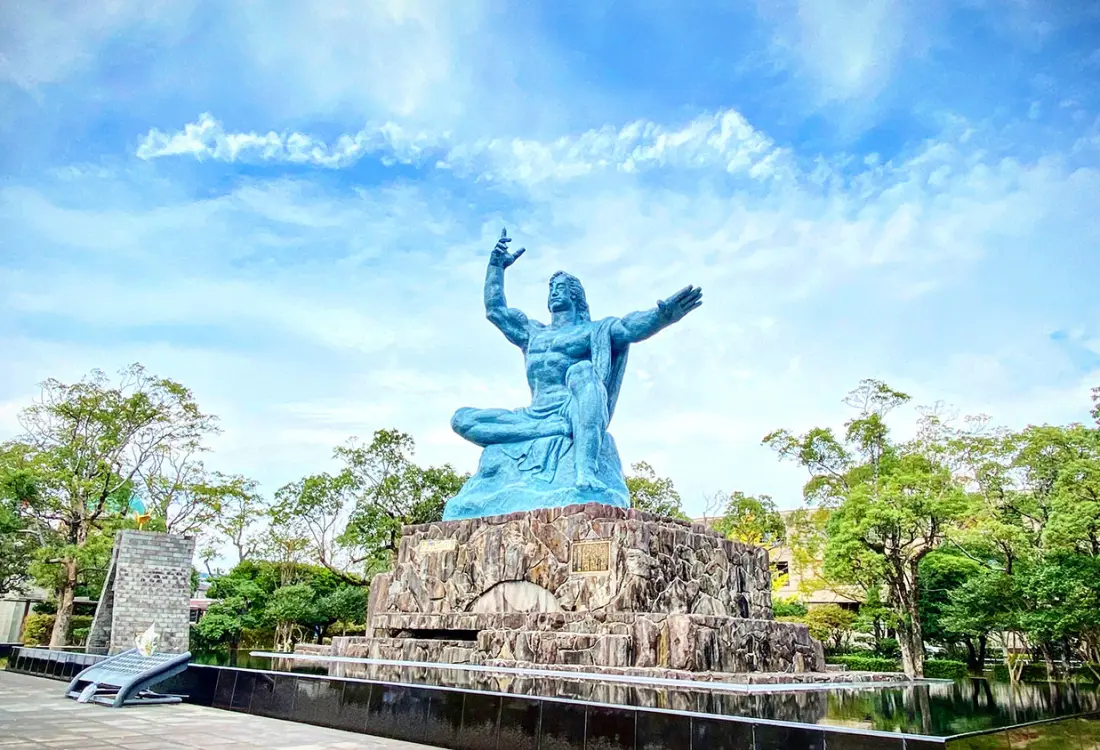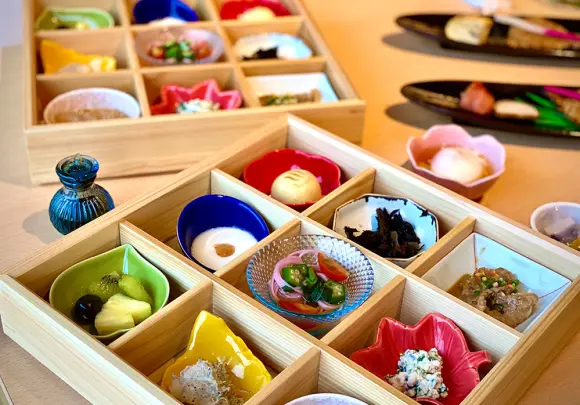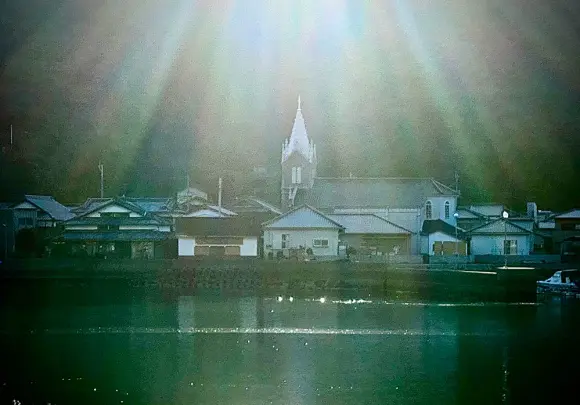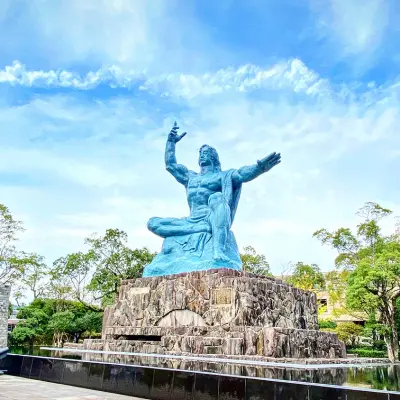
Exploring peace in Kyushu and environs: A most worthwhile journey
Kyushu and neighboring areas are home to numerous sites dedicated to helping us bring peace to our world, through a journey that begins by understanding history.
Day 1
The world was forever changed when the atomic bomb detonated over Hiroshima on August 6, 1945. Mark a powerful beginning to your peace-related exploration by paying your respects to the souls of the dead at the Hiroshima Peace Memorial Park cenotaph at 8:15 AM, the time the bomb was dropped. The adjacent museum offers deep insight into the suffering experienced by hibakusha (atomic bomb survivors) through photos, commentary, and objects salvaged from the blast.
Photo by Joachim Ducos

An emotional visit to this museum is perhaps the best way to honor the hibakusha’s oft-repeated phrase: “Never Again.” In this spirit, past high-profile visitors have included Pope Francis and former U.S. President Barack Obama. Afterward, decompress with a calming walk around the Peace Park grounds. The iconic A-Bomb Dome monument serves as a stark reminder of the city’s nuclear devastation, while the Children’s Peace Monument poignantly memorializes the story of Sadako Sasaki, a hibakusha who died at age 12 after folding 1,000 cranes to express her hopes for peace.
Photo by Joachim Ducos

Feel the pulse of the city by sampling the local soul food, okonomiyaki. For an international twist, try an award-winning version at Okonomiyaki Lopez, featuring fiery jalapeños. See outdoor art installations at the tranquil hilltop Hijiyama Park, then hike up Mount Misen on the sacred island of Miyajima for spectacular ocean views. To get a head start on Day Two, drive to the halfway point: Kitakyushu, gateway to the Kyushu islands. Consider visiting the retro town of Mojiko, on Kyushu’s northeastern tip, which has a vibrant history as a thriving international port in the early twentieth century.
Courtesy of Hiroshima Prefecture


Day 2
Kumamoto features dramatic nature and premier onsen hot springs, along with one of Japan’s most intricate castle complexes. Kumamoto Castle was first erected in 1467, and later fortified by feudal Lord (and master castle-builder) Kato Kiyomasa. Although lauded as an impenetrable fortress, it was no match for the forces of nature—several earthquakes caused damage throughout Kumamoto Castle’s history, most recently in 2016. Ongoing construction includes a project to meticulously restore the castle’s stone walls to their previous exact positioning.
Photo by Kumamoto city


Walk up Mount Hanaoka, located behind Kumamoto station, to visit its Peace Pagoda. This is the first such monument in the world, built in 1954 by Japanese monk Nichidatsu Fujii following his meeting with Indian peace devotee Mahatma Ghandi. There are now 80 Peace Pagodas worldwide, including in Hiroshima and Nagasaki. Another special place to visit is the former residence of Greek-Irish writer Lafcadio Hearn (known in Japanese as Koizumi Yakumo), famous for his portrayals of ghost stories and the underworld in Japan—his adopted home—during the late 1800s.
Photo by Kumamoto city


Next, head out to the lovely Amakusa islands, whose name translates as “heavenly grass”. Stop for dinner at Trattoria Via Centro, where friendly chef/owner (and Amakusa native) Michio Sakai serves superb Italian cuisine, having honed his craft in Tuscany. He is also involved in a collaborative initiative with Fiat Japan to promote olive oil made from olives grown in Amakusa. It's best to make reservations—this place is popular. Leave just in time to catch spectacular sunset views from the rooftop of Boyokaku Inn in Shimoda Onsen, when you can peacefully retire for the night.



Day 3
Boyokaku features stylish touches such as chalk art recounting local history and culture, and artfully presented meals in its Horizonte restaurant (a nod to the region’s Portuguese influence). After breakfast, enjoy a morning swim in the pool, followed by a restorative onsen bath. According to hotel proprietor Keiko Fujimoto, the local waters of Shimoda are very soft on the skin, at the perfect temperature for long soaks.



The waters around the islands of Amakusa are home to some 200 bottlenose dolphins. Take a cruise to see them frolic; dolphins appear year-round, with the most frequent sightings between spring and summer. “Dolphins continue to swim in Amakusa’s waters, thanks to a number of miracles—beginning with the fact that they were historically not hunted by fishermen, even though both were competing for the same food sources,” Fujimoto said. “Here in Amakusa, peaceful relations are woven into our history.”

Visit Sakitsu Church to explore the fraught history of “Hidden Christians”, who fled to the islands to secretly practice their faith during an Edo-era ban on Christianity. Enforcers of the ban included Lord Kato Kiyomasa, who in addition to building castles, was a staunch anti-Christian militarist. However, Fujimoto pointed out that people of different faiths had co-existed harmoniously in Amakusa, where local residents refused to turn in their Christian neighbors despite being offered enormous rewards.



Day 4
Enjoy stunning ocean views along the western Nagasaki coast, including a car ferry ride, to reach Ono Church, which was built after the ban on Christianity came to an end. Then stroll around Ono Village to see Shinto shrines where Christians had secretly prayed. Stop for coffee at the charming Café Ozimoc, housed in a 120-year-old kominka (traditional folk house). A friendly shopkeeper in the village gifted us with a bag of freshly boiled peanuts---a signature display of Kyushu hospitality.



After reaching the city of Nagasaki, have lunch in Chinatown, established by the city’s Chinese traders. Your final destination for understanding the region’s Hidden Christians is Oura Church, which houses a comprehensive exhibition recounting this extraordinary history. Christians were blamed—and foreign missionaries purged—following the 1630s Shimabara Rebellion, which was in fact a response to heavy taxation. Although they faced severe punishment or death for practicing their faith, Christians nevertheless found ways to worship in secret, such as transposing the Virgin Mary onto seashells.



Take a leisurely walk through Nagasaki Seaside Park to Dejima, which was historically restricted to Portuguese, then Dutch traders. Art lovers might also want to visit the Nagasaki Prefectural Art Museum. Pick up some local souvenirs at Bunmeido, a shop famous for its castella cakes (and superb designs), before dinner at a waterfront café along Dejima Wharf. Top off the night with a panoramic view from atop Mount Inasa—consistently ranked as Japan’s best nighttime cityscape.




Day 5
As the second city to have suffered an atomic bombing, Nagasaki also has its own dedicated Peace Museum. Before you enter the museum itself, you will have the visceral experience of traveling back in history as you descend a spiral staircase counting down to August 9, 1945, when the bomb was dropped at 11:02 AM. Inside, stark imagery and artifacts impart the enormity of what was lost: video footage of the billowing mushroom cloud over the city; fragments from a destroyed church and elementary school near the epicenter; poetry from anguished survivors.



The Peace Park adjacent to the museum includes a section for statues, along with heartfelt calls for peace gifted from around the globe. Also permanently installed here is the “From Above” hibakusha photo exhibition by New York photographer Paule Saviano. In order to help convey their powerful message of “Never Again”, he has vowed to continue photographing the survivors until the last one is gone.




Kimberly Hughes
Kimberly Hughes is a freelance writer, translator, and community organizer who is originally from the desert of the southwestern U.S. and has been based in Tokyo since 2001. She is somewhat addicted to global travel, and also loves cooking, gardening and reading.

Photos by Solveig Boergen
Solveig Boergen is a Tokyo-based photographer originally from Germany who has spent more than three decades living in Asia(Japan, China, Hong Kong, Taiwan, Thailand and Nepal). Her work aims to share human stories, and to show realities that might otherwise remain unseen.Besides travel photography, she specializes in portraits that convey deep emotion, such as newborn babies with their families.
Book your perfect stay in Kyushu with thousands of properties to choose from
 Kyushu by Rail
Kyushu by Rail Exploring the boundless world of Japan's meccas of spirituality
Exploring the boundless world of Japan's meccas of spirituality Historic Sites and Seaside Adventures
Historic Sites and Seaside Adventures Kyushu's Scenic Coast
Kyushu's Scenic Coast Natural Wonders and Hot Springs
Natural Wonders and Hot Springs A Taste of Kyushu
A Taste of Kyushu Exploring peace in Kyushu and environs: A most worthwhile journey
Exploring peace in Kyushu and environs: A most worthwhile journey Dive deep into Kyushu’s rich culture of onsen bathing and porcelain
Dive deep into Kyushu’s rich culture of onsen bathing and porcelain






